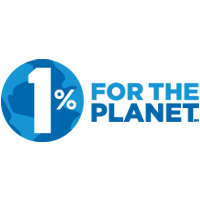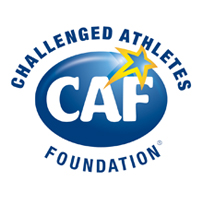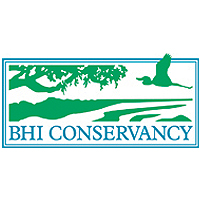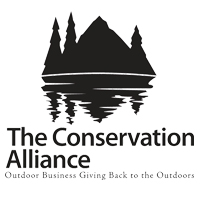Badwater and Back
April 1997 Marathon Des Sables, Sahara Desert Morocco: Where it all started:
I am standing in the sand dunes with two runners looking at the star laden sky. Nick the Greek is a six foot four accountant from London and the other a small wiry American who’s run most of the world’s ultras. Bill Menard was designed by God to run long distances. His slight frame is supported by powerful legs and when he runs they swing like pendulums pursuing perpetual motion. I am honoured a great runner like Bill is talking to me, after all I’m one of the fat wheezy boys at the back and it can’t have escaped his notice that I’m definitely deficient in the limb department.
There’s been a lot of discussion among the runners about which race really is the toughest footrace on earth. I decide to ask Bill. He replies ‘the organisers and media are saying this one, but no chance! There’s a race in Death Valley, California, which is about the same distance. The difference is that in the Sahara you do it over a week, in Death Valley you do it continuously and there’s a sixty-hour cut off. Most of it’s uphill, the downs are so steep and long they kill your quads and it’s all on hot, hard roads. People say the sand’s tough here, but it’s gentle on your joints and you can tape your feet to avoid blisters. About half those who start Badwater don’t finish and it’s thirty or forty degrees hotter than here. In a few years time when you’re a bit faster you should try it.’
I recall the Sahara daytime temperatures of ninety plus and wonder if he’s yanking my chain about it being thirty or forty degrees hotter.
Death Valley July 2000
Viva Las Vegas. After the long flight, I carefully stow my running kit and cool boxes in the small hire car. I check it off in my mind. Trail shoes and mountain kit, four pairs of trainers (all at least one size too big to allow for heat expansion), spare leg, sun screen, lycra shorts and coolmax shirts, sun protection top and trousers, sun hat, shades, shemag, sand goggles, torches, batteries, reflective night vest, false leg tool kit, shed loads of High 5 isotonic and energy powder plus boxes of High 5 wild berry and banana bars and the chocolate caramel protein bars that are so good I want to start scoffing them now.
Driving into Death Valley from the tiny town of Beatty, Nevada, is a gentle downhill, which would be an easy run to Badwater, the lowest point of the USA, but we’re not here for that, we’re here for Badwater. Any other run through Death Valley on any other route at any other time of the year is a soft option. The temperature in Death Valley peaks in July. The rocks act like huge heaters absorbing the sun’s energy and rising to temperatures of 93 degrees centigrade. The air temperature is 130 degrees Fahrenheit, not far off the temperature Delia Smith recommends you slow cook chicken; in fact I think it would probably be cooler in a slow cooker.
The outline of the sand dunes on my right tells me I’ll soon be at Stovepipe Wells Village hotel, a small sprawling pre-fabricated complex reminiscent of a tiny mining town. I drive to the reception at the Visitor’s Center at Furnace Creek. As I open the car door the heat hits me like a hammer. A steady wind blows and the dry hot air begins to suck all the moisture from my body. If you want to know what it’s like to be here, put your hairdryer on maximum heat, full blast and stick it in your face.
At the pre-race meeting I meet old friends. It’s great to see three lads from the RAF I met in the Sahara. There are some awesome runners here. Most of the people who’ve won this race have also not completed it on several occasions. The heat, hills, distance and hard road show no mercy.
Lisa Smith, an excellent ultra runner, and her partner Jay Batchen kindly give me a few tips on kit and technique. Their medical kits are impressive. They have two huge containers full of every imaginable drug and dressing. I have some zinc oxide, a bit of sheep’s wool, four stopping up tablets and an Elastoplast.
The elite runners start at six am on Thursday 27 July 2000. I’m on the eight am start. On the way we pass the Russians running like fury. They’re way out front. Surely they can’t maintain that speed? They’ve made the classic Badwater mistake of starting too fast. The rule is simple: start too fast, fall over later. Many experienced runners say the race starts at the forty-two mile point (Stovepipe Wells Village).
I watch Anatoli Kruglikov (Russian male), Dusan Mravlje (Slovenian male) and Irina Reutovich (Russian female). They run with the grace of gazelles. The look of determination on their faces and their running style tells me the normal rules do not apply to them; everyone suspects that they’ll break the records.
Badwater is a team event, because every runner has to have a crew handing out drinks, food, blister treatment and water. The race rules stipulate the crew vehicle must leap frog ahead and monitor their runners at all times. This is probably why nobody has ever died doing Badwater, but there are deaths in the area. On the last day of the race a woman’s body had been found one hundred yards from her car on a remote road seventy miles away. She’d broken down and didn’t have an emergency water supply she died from dehydration. The Park Wardens frequently treat air-conditioned tourists used to airport, hotel and hire car for heat exhaustion when they leave their cars for a few minutes and fall over in the heat.
I start slowly. It’s tempting to rush off and race while you’re fresh, but your writing cheques that later on your body can’t pay. My drinking plan is simple: 500mls of High 5 isotonic every half-hour. It varies between individuals, but the stomach can only continually absorb between 600 and 1200 ml an hour. Over a long period the danger is that if you put too much fluid in the stomach it will close down. When my stomach feels dodgy I take half strength High 5.
After two hours the sun scorches and the heat cuts into you like a razor. I stumble on in a dream. I’ve never been anywhere this hot. Forget the hairdryer, stick your head in an electric-fan pizza-oven on max and you’ll begin to understand.
For a while I trundle along with my friend Jack Denness. Jack’s the sort of bloke who makes you proud to be British. Every year he and his wife, Mags, take their holiday at Badwater. He’s sixty-seven, runs for charity and always finishes. Jack’s crewed by his wife, his local postman and ex-commando, Frank McDonagh, and a local American friend.
The first nineteen miles fly by. Suddenly a park warden’s station wagon zooms past with flashing lights and screaming siren. A few minutes later an ambulance roars by and my ears sing in the wake of its siren. Looks like the heat has claimed its first victim. As I approach the crew vehicle I ask what temperature it is. They reply it must be over 125 Fahrenheit or 50 degrees C, because the digital thermometer has maxed out and won’t give a reading.
I keep sipping High 5 isotonic and speed up my drinking and my pace. I stagger into the forty-two mile point at Stovepipe Wells hotel at sunset and feel much better for a dump. On the way in, I speak to one of my friends from the RAF. He’s decided, or it’s been decided for him, that he can’t continue because his heart rate is racing too high. Before he leaves the course, he waits for me to come through so he can give my crew his ice, which is in short supply. As my head spins and I struggle to stand straight I admit I’m suffering and that, if I’m going to finish, I have to slow down. I started too fast.
The Mayor of Badwater, Ben Jones, who is surprised to see me so soon, confirms this. Ben and his wife Denise are universally loved and admired by all those involved in Badwater. Their training clinics, coordination, encouragement and help to runners have helped many to achieve something they believed impossible. It’s hard to find words that speak highly enough of Ben and Denise.
My crew consists of two Japanese friends and one from England. Hiroki is an expert in massage and pummels my aching back sending me to sleep for thirty minutes. I wake with a start and see the crew doing something in the vehicle. I shout to them, but they’re too far away to hear. I must get going. I look for my leg, but can’t see it. They must have it. The only thing I can do is drift back to sleep and wait for them to bring it back.
I wake with a start. I should be moving. Somebody passes my leg and I grunt as I force the blistered and bruised stump into the socket. I start down the long road again aware that I’ll be going uphill all night. I bimble on at a leisurely pace. My target time for finishing is fifty-seven hours. When I get there, it’s going to get tough. I intend to climb the mountain trail, come back down and then fast limp back along the 135-mile race route to Badwater. That’s all I keep in my mind, the dream of finishing back at Badwater.
When it hurts and I can’t take another step, I dream of being on a British Airways plane, going home to see my wife and son. It’s cool and, as I lean back in my seat to sleep, the airhostess in the BA dress says ‘would you like anything sir?’ I reply, ‘yes please some more ice cold orange juice.’
I keep telling myself, ‘every step takes me nearer to the plane. The great thing is to keep on keeping on. Failure is not an option.’
As dawn breaks I begin to fear the emergence of the sun. I’m descending Townes Pass and I want to cross the valley floor before it’s too hot. I pick up the pace.
During the relentless day, I realize my crew has not been able to stick to the twelve hours on, twelve off routine I’d suggested. Now they’re likely to be too tired to do the grueling return trip. There’s a mix up and I have to go nearly a mile without a drink. It’s dangerous; out here you can dehydrate in half a mile. I pace it carefully and rest when I reach the vehicle. If I continue, I’ll never replace the fluid debt. I plan to doze for fifteen minutes in the front seat. After a few minutes, the clicking of a camera shutter wakes me. Now I can’t get back to sleep and to make matters worse the box of High 5 protein bars are nowhere to be seen.
I heard about the tragic Concorde crash in Paris and my thoughts and prayers are with the dead and their relatives. The shocking thing about this race is that the harsh, hot reality consumes you. The exhaustion, no drink and the missing High 5 bars make you feel the same way as the Concorde crash except that the reality is more immediate. I crave the caramel taste of the protein bar; it’s the only thing I feel like eating. I say nothing, smile and try to hide my bottom lip, which is the size of a rolled up sleeping bag.
I know I’m on the edge of collapse. I’ll take it steady so I don’t go over. Keep looking at the watch. It never lies. Remember that. The first thing to go is your sense of time, out here minute’s feel like hours. As I leave, I check to see if I’m going in the right direction. There are plenty of runners in this race who’ve gone the wrong way until someone corrects them.
Ben and Denise Jones drive by and stop to see how I’m doing and give encouragement. I ask Ben what time he thinks I’ll finish at the Portals. He looks at me, glances at his watch and says, ‘four thirty PM Saturday or just before five if you talk to people on the way up to the Portals.’
That’s good. I’m spot on target.
Most people underestimate just how tiring and difficult it is to crew this event. Bob Hallmark from High 5 and two American Seabees whose runner, Maria De Jesus, went down with food poisoning save me. They take over crewing to give my guys a rest. As I get into the back of their vehicle for Bob to do my blisters, one of the Seabees asks me if I’d like chicken pasta. I think he’s joking and say yes. Less than two minutes later it appears. I can’t believe it. These guys are good and Maria, although she’s still sick, paces me. She’s in the category of a thoroughbred runner and, in many respects out here, the faster you are the more likely you are to fall over, because the tolerances are so fine. If you have any illness or injury Badwater will find it.
During the night I meet up with desert and mountain man Scott Weber, the first man to do the out-and-back double (=quad) 600 miles. Now he’s a full-time ultra running and desert trekking coach. His people always finish Badwater. Scott gives me some good advice. ‘If you want to do the out and back, go for ninety minutes and rest fifteen. You’ll cover more ground that way.’
He’s right and I sleep for the fifteen minutes. I keep a steady pace and feel better. The night and scenery roll by me as if I’m on a slow conveyor belt and I approach Lone Pine. After the desert, it’s strange to be in a town. They used to make Westerns here. Pictures of John Wayne, Roy Rogers and Audie Murphy hang in the hotel. They came here because desert, mountain and range could be filmed in the same place.
Lone Pine whizzes past and, as I begin the endless climb to the Portals, a wave of fatigue smothers me. I keep falling asleep on my feet and my pace slows to a wobbling stagger. I try everything to stay awake. One of the Seabees marches with me and teaches me to count from one to four in Philippino. For an hour we shout the sleep away and when people ask what the war chant means, we laugh.
Half way up the hill a people carrier stops. Three lean athletes jump out and smile and wave. There are the legends. Anatoli Kruglikov finished in 25:09:05 breaking the men’s record by 2 hours 40 minutes. Dusan Mravlje of Slovenia was just twelve minutes behind him. Irina Reutovitch smashed the women’s record by seven hours finishing in 29:48:27. I accuse them of being robots or aliens because it’s hard to believe any human could do Badwater as fast as they have.
We do a few photos and I get a big lump in my throat when they tell me that if they hadn’t seen me do it they wouldn’t have believed somebody disabled could cover the distance. They leave me feeling on cloud nine as I trog on to the finish. I cross the line a few minutes before five as Ben predicted. I’m on target and I feel fresh; this is good because the tough bit hasn’t even started yet.
US Marine Corps Major Curt Maples finishes an hour ahead of me and on his way back down stops to offer encouragement, despite the fact that he’s been passing blood in his urine. He’s responsible for bringing the Marines and Seabees who have quietly helped so many people to finish Badwater.
Chris Kostman (adventureCORPS), the race director, and his team make crossing the line special for every finisher. He stands on the line for more than twenty-four hours to present the large ‘Badwater Finisher’ medal. Getting one is like flying.
I rush back to the hotel to get a few hours sleep before climbing the mountain. I haven’t taken my leg off because I know the stump is in tatters and I might not get the leg on again. I ease it off to see the whole of the base is one big blister and the back is the same. There’s nothing I can do. Dressings never stick to the stump and they increase pressure to an already sore area. I try to get a few hours sleep.
We begin the mountain ascent at one AM. I’m fortunate because I’ve been able join Adam Bookspan’s team. He’s awesomely fast and is doing the out-and-back the other way round (= the reverse double); starting and returning to the highest point of the contiguous United States. Former US Ranger and mountain guide, David Sowers, leads the mountain trek. He’s good. The whole trip is done at a perfect pace.
As daylight emerges the beauty of the mountain and the purple and blue alpine plants is stunning. A smoky haze from the distant forest fires hangs round the top of the mountain. At one point the trail is lost in a rock-fall, so we scramble. The summit and view are breathtaking.
On the route down, Dave takes me ahead so I can begin my return trip. One of my crew decided to do the mountain, which is great. But, because the others have had to sort out filming, there’s now nobody fresh to drive all night. For safety reasons I look for a new crew. Still not to worry, I’ll sort something out.
Immediately to my rescue is Jack Denness, who with Frank McDonagh, offers to crew me all night. Another friend, Kawika (Spaulding), and Norman and Bill will take over when they’ve trekked the mountain. I start at the Portals in high spirits and steadily yomp through the night with ex-commando Frank pacing me. We go ninety minutes and rest fifteen. I never really get an explanation as to why all my mates who are commandos get their kick after a few beers.
Now day merges into night and the journey becomes one huge cycle of citrus High 5, moving and catching a few minutes rest. Time loses all meaning and it feels like I’m swimming in hot molasses.
I reach the halfway mark of the return trip just after Panamint Springs. I’ve completed three-quarters of the overall trip. Now it’s only sixty-seven and a half miles to go. That’s less than three marathons. Just one slight problem: I’m completely knackered.
Suddenly a people-carrier draws up. Three longhaired, bearded gentlemen introduce themselves. Bill the driver and drinks man, Norman the yoga expert and cook (wearing a loincloth and no shoes) and Kawika the runner and desert man. They have a reputation for being one of the best crews around. Sadly, Frank MacMillan, their runner couldn’t do the out-and-back because of crippling blisters, but he sent his crew to help me out. I look to the heavens and thank the big man upstairs. These must be the three wise men. Not only do I now have the best crew in Death Valley, I also have the crew with the coolest beards in the land.
Kawika thinks the wet shemag I’m wearing is working well, but also makes me put a white cotton shirt on and soaks it. He brings my body temperature down so much I feel cold for the first time since I was at the top of Mount Whitney. When I take a break for fifteen minutes, they go off to admire the beautiful red barrel cactus that take hundreds of years to grow. These are real desert men.
At the top of Townes Pass, the wind drives the heat of Death Valley into my face. A car is parked off the road with the doors and windows open. It must be the break down; Kawika mentioned them at the last stop. He’s already reported it and got them sorted out. I check that they’ve got enough water and advise them not to leave the vehicle and jog on. As I go, they nod and stare at me open mouthed. A while later, the California Highway Patrol passes me with them in the back.
As darkness approaches, we stop at a park warden’s picnic site so Norman can cook. We’ve decided I’ll go faster if I eat a good meal and sleep for a few hours. The food is fabulous. I have to take my false leg off because it hurts too much to sleep with it on. I slumber in heavy uncomfortable snatches feeling guilty about not moving.
After two hours I slowly raise my carcass and try to force the stump into the false leg, but it’s swollen so much I can’t. I get it in as far as I can and limp towards Stovepipe Wells Village. The pain shocks with every step. It’s not properly in the socket so the pressure is on one point. It gets worse. My speed has been reduced eighty per cent.
The vehicle catches up and Norman stops me. For thirty minutes he heavily massages the stump to reduce the swelling enough so I can get my leg back on. Fortunately the big blisters have popped, but it’s still a bit sore.
Eventually I force the stump back into the socket and head off vowing to never stop for more than fifteen minutes ‘till I finish. Just as the sun starts to get hot there is a miracle. Grey clouds cover the sky. The wind gets up and for ten minutes huge raindrops fall from heaven like a gift from God.
The sky is overcast for an hour before the temperature gets close to 130. Time for me now consists of a series of eternal footsteps. The routine is broken when several British tourists stop and walk with me for a while. They’ve spotted the Union flag on our vehicle which Jack (Denness) gave me.
The harder I try the slower the miles seem to pass. At sunset I reach the final turnoff marking just seventeen miles to go. As I fast limp forward fighting sleep and fatigue, it’s hard to believe just a few days ago I easily covered this distance in a few hours with little effort. I drag myself on.
It builds up gradually and then a hellish hot blowlamp gale blows straight into my face. This wind is roaring hot and angry like the devils breathe straight from hell. The continual blast of wind in my ears is so loud I can’t hear what the person next to me says. It sucks moisture like blotting paper. I feel like a matchstick in a whirlpool.
I force myself on feeling hollow and brittle. I look at the stars and then the rocks by the side of the road. The lack of sleep is catching up with me. I’m starting to hallucinate. Rocks look like power tools and the other shapes look like trees in the B & Q garden department. Then I start to see shopping trolleys. The lack of sleep is obviously sending me off my trolley. I stagger on blinking and telling myself to ‘get a grip’.
I’m running on empty. After each mile, I rest for five minutes. I get stuck at the eight-mile point for an eternity and do mile-eight many times over. It’s like being on a huge treadmill. I stop and have two High 5 banana bars and feel human again.
Eventually, it’s just three miles to go and the glow of a small light marking the public toilets at Badwater appears on the horizon. I stumble on with renewed vigor. Can I really be nearly here?
I keep telling myself, ‘I’m nearly there.’ Turning the corner, I’m blinded by the vehicle lights and Teddy’s video camera light. The three wise men put a marker in the road with a bottle of champagne that Teddy somehow miraculously procured.
I pick up the bottle and run to the Badwater sign. I thank the crew and everyone who helped me. I’ve got so used to the taste of High 5 I can’t drink the champagne, so I re-hydrate. We sit at a picnic table and look at the stars. I think, ‘It wouldn’t surprise me if they could see our smiles in outer space’ and then fall asleep.
B & Q sponsored me to do this run to highlight disability issues and support organizations assisting the disabled and disadvantaged, among them the Princes’ Trust and Motivation (a charity helping provide wheelchairs in places where there are none). We also want to support the principles of full access to all public and retail facilities for those with disabilities and the goal of a totally inclusive society where we focus on what people can do rather than what they can’t
What Did the Journey Teach Me?
I learned the importance of having a dream and never, never giving up. The desert teaches us respect and humility. Nobody except a fool would say they conquered Badwater; but Badwater, Mount Whitney and the long desert road have helped me conquer something in myself. There is a saying ‘God made the desert so that man might find his soul.’
My passionate belief in the dignity of the individual was reinforced and I believe that if we have a reason to do something that is more important than we are, then the human spirit can tolerate anything. Above all Badwater finds your weaknesses and teaches honesty and humility and that we can all go one step beyond our limits.
I believe our prayers can be answered and that the truth about human relationships is that they should be about interdependence. Thank you to everyone who so generously crewed and assisted, particularly B & Q the sponsor. They all made the journey possible.
Here is the charity Chris ran for.








